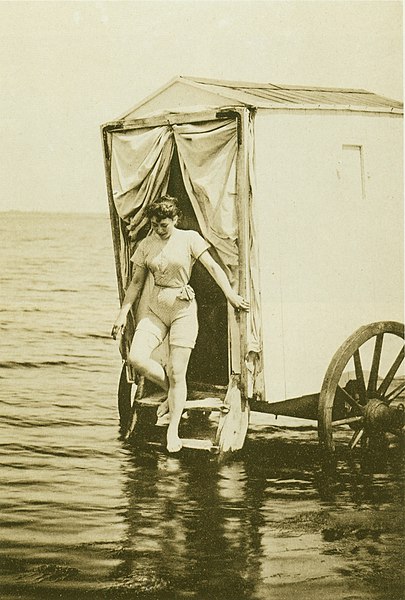The bathing machine was a device, popular from the 18th century until the early 20th century, to allow people at beaches to change out of their usual clothes, change into swimwear, and wade in the ocean. Bathing machines were roofed and walled wooden carts that rolled into the sea. Some had solid wooden walls, others canvas walls over a wooden frame, and commonly walls at the sides and curtained doors at each end.
Women posing near a bathing machine in 1902
Horse drawn bathing machines in Wyk auf Föhr, Germany, 1895
Sea bathing in mid Wales c. 1800. Several bathing machines can be seen.
Mermaids at Brighton swim behind their bathing machines in this engraving by William Heath, c. 1829.
Sea bathing is swimming in the sea or in sea water and a sea bath is a protective enclosure for sea bathing. Unlike bathing in a swimming pool, which is generally done for pleasure or exercise purposes, sea bathing was once thought to have curative or therapeutic value. It arose from the medieval practice of visiting spas for the beneficial effects of the waters. The practice of sea bathing dates back to the 17th century but became popular in the late 18th century. The development of the first swimsuits dates from the period as does the development of the bathing machine.
Kiama sea baths in New South Wales, Australia
Sea bathing in mid Wales c.1800. Several bathing machines can be seen.
Sea bathing at Boulogne in the 1840s
Bathing machine and woman's swimwear style of Germany, 1893







